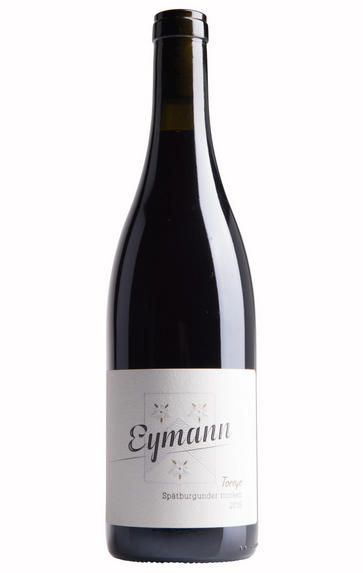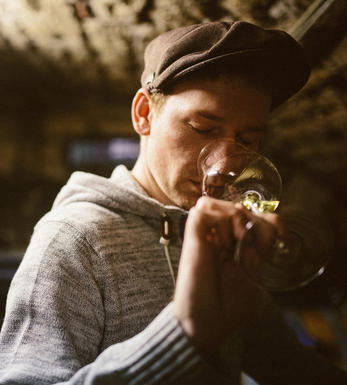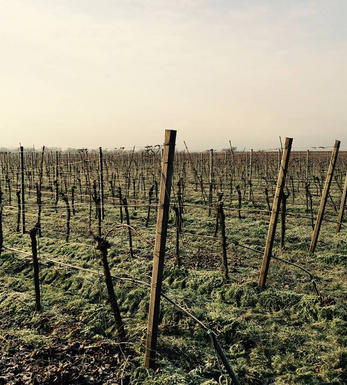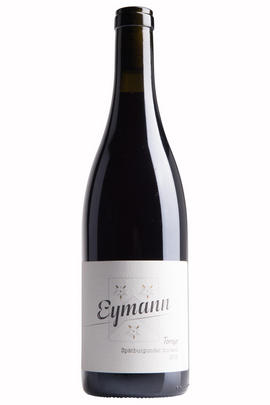
Critics reviews
About this WINE

Weingut Eymann
Weingut Eymann winery is located in the Pfalz wine region of Germany and is known for its commitment to organic and biodynamic winemaking practices. The Eymann family has a long history of winemaking, with the estate dating back to 1782. What sets them apart is their dedication to sustainability and environmental responsibility.
The winery's vineyards are certified organic and biodynamic, reflecting their holistic approach to viticulture. These practices prioritize the well-being of the land, resulting in high-quality, terroir-driven wines that truly express the character of the region. Weingut Eymann specializes in Riesling and other grape varieties such as Pinot Noir and Chardonnay. Their wines are celebrated for purity, elegance, and a solid connection to the terroir.

Pfalz
The Pfalz - known as the Rheinpfalz until 1992, and the ‘Palatinate’ in English - is the second largest wine region in Germany after Rheinhessen and is often the biggest in terms of production. Its temperate climate is the sunniest and driest of all the German wine regions.
The vineyards that make up the Pfalz stretch from the southern limits of Rheinhessen near Worms down to the French border at Wissembourg. Covering a substantial 23,000ha, they follow the contours of the Pfalzer Wald forest for nearly 80 uninterrupted kilometres.
The Pfalz produces very pleasant, soft, full-bodied white wines with a rich bouquet. There is a staggering 45 white grape varieties grown here but the most common are Riesling (21%) and Müller-Thurgau (21%) with Kerner, Silvaner and Scheurebe also widely found. The Pfalz produces smooth, fruity reds from the local Portugieser and Dornfelder varieties as well as Spätburgunder (Pinot Noir) which accounts for more than 30% of red plantings. The soils vary greatly - from loess and decomposed layered sandstone through to isolated islands of shell limestone, marl, granite, porphyry and clay-slate - and such variation is reflected in the character of the wines.
This is arguably Germany’s most exciting, and also most environmentally aware, wine region. Well over 100 estates work in accordance with organic principles and an impressive number of them have fulfilled the stringent criteria for becoming officially certified. Pfalz was also the first German region to have a ‘Deutsche Weinstrasse’ (German Wine Route) winding its way through its vineyards and villages, and inspired many more. One of the cities along the Weinstrasse is Neustadt, which holds a famous wine festival every October where the German Wine Queen is crowned.
Recommended Producers: Von Bühl

Pinot Noir
Pinot Noir is probably the most frustrating, and at times infuriating, wine grape in the world. However when it is successful, it can produce some of the most sublime wines known to man. This thin-skinned grape which grows in small, tight bunches performs well on well-drained, deepish limestone based subsoils as are found on Burgundy's Côte d'Or.
Pinot Noir is more susceptible than other varieties to over cropping - concentration and varietal character disappear rapidly if yields are excessive and yields as little as 25hl/ha are the norm for some climats of the Côte d`Or.
Because of the thinness of the skins, Pinot Noir wines are lighter in colour, body and tannins. However the best wines have grip, complexity and an intensity of fruit seldom found in wine from other grapes. Young Pinot Noir can smell almost sweet, redolent with freshly crushed raspberries, cherries and redcurrants. When mature, the best wines develop a sensuous, silky mouth feel with the fruit flavours deepening and gamey "sous-bois" nuances emerging.
The best examples are still found in Burgundy, although Pinot Noir`s key role in Champagne should not be forgotten. It is grown throughout the world with notable success in the Carneros and Russian River Valley districts of California, and the Martinborough and Central Otago regions of New Zealand.



Buying options
Add to wishlist
Description
While it's rarely acknowledged, Germany is the third largest producer of Pinot Noir (aka Spätburgunder) in the world. This is a wonderful example of an accessible, refreshing Pinot that offers an interesting alternative to Burgundy. Bright, medium red intensity colour with red cherry, redcurrant and raspberry fruit aromas. Herbal top notes with a savoury spice character that continues through to the palate. Chalky tannins with refreshing and lively acidity. Moderately light bodied with a juiciness that provides additional weight.
wine at a glance
Delivery and quality guarantee